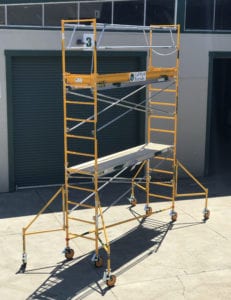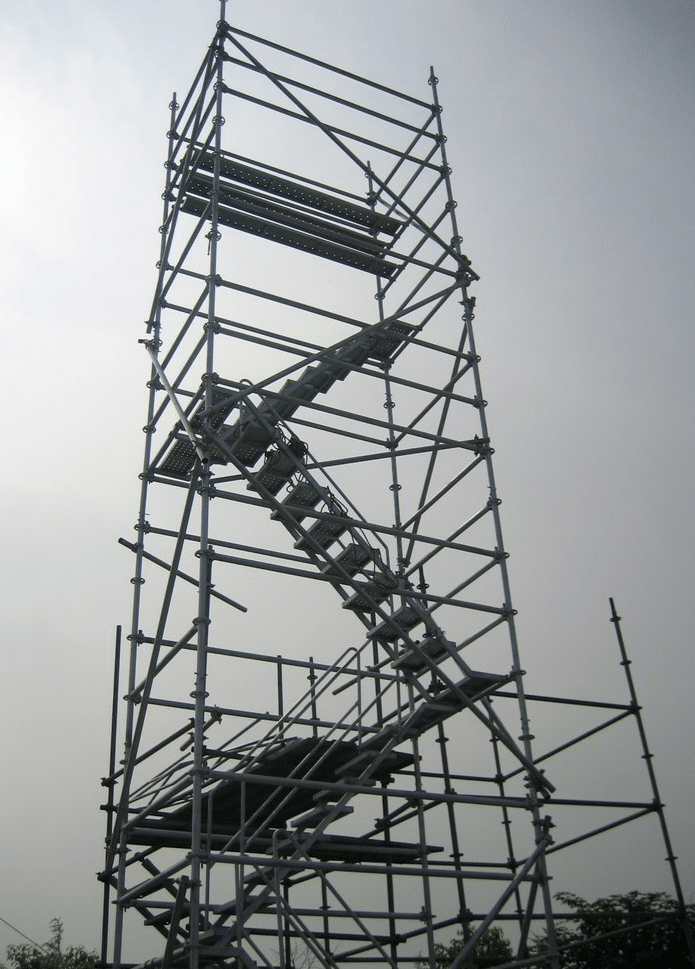Scaffold Dismantling Security: Treatments to Adhere to
To guarantee scaffold taking down safety, conduct detailed pre-dismantling evaluations checking for damage and stability. Safe tools and equipment effectively with routine checks and organized storage. Clear the work area to avoid hazards, set up cleanup treatments, and make use of the ideal tools for dismantling steps. Examine post-dismantling stability, evaluate the ground, and implement precaution purely. Adhering to these treatments is important for worker security. Understanding each step in the taking down procedure is crucial for successful and secure scaffold taking apart.
Pre-Dismantling Evaluation
Prior to starting the dismantling process, what trick aspects should be evaluated throughout the pre-dismantling phase to assure security and performance? One crucial aspect is conducting a detailed security check to make certain that all safety and security methods remain in area and functioning appropriately. This includes taking a look at guardrails, toeboards, and personal protective equipment to stop drops and other crashes throughout the taking apart process.

Another vital aspect to ponder throughout the pre-dismantling stage is evaluating the structural stability of the scaffold. It is vital to look at the scaffold elements for any type of signs of damages or use that could compromise its integrity. This consists of monitoring for corrosion, rust, or any deformities that might compromise the scaffold structure.
Safeguarding Tools and Devices
To assure the safety and efficiency of the scaffold taking apart process, it is important to safely save and organize all tools and devices used during the procedure. Correct storage space and equipment upkeep are essential consider making certain a smooth and hazard-free dismantling process. Below are some vital actions to comply with:
- Mark certain storage space areas: Appoint dedicated places for each and every device and equipment thing to stop clutter and confusion. This method help in simple gain access to and reduces the risk of locating spread devices.
- Make use of device belts or bags: Urge employees to utilize device belts or bags to carry vital hand devices. This not just keeps tools safe and secure but also enables hands-free activity on the scaffold.
- Apply routine equipment checks: Conduct routine evaluations to make certain that all tools are in great working problem. Any harmed or defective devices must be quickly repaired or changed to stop crashes.
- Secure loose equipment: Use lanyards or secures to safeguard equipment that positions a threat of dropping from elevations. This preventative measure lessens the risk of devices going down and creating injuries to employees listed below.
Cleaning the Workplace
Making certain a clutter-free and well organized workspace is necessary before beginning the scaffold dismantling procedure to enhance security and effectiveness. Site preparation is crucial in this phase to ensure a hazard-free setting for workers. Prior to beginning the taking apart procedure, safety and security precautions have to be purely complied with, including the inspection of the work area for any prospective risks.
Debris elimination plays an important function in maintaining a risk-free work environment. Clean-up procedures should be established and followed carefully to avoid mishaps brought on by slipping or locating products. Appropriate disposal methods must be executed to throw away particles securely and effectively.
Systematic Taking Apart Process
Executing a systematic strategy is necessary for the risk-free and reliable dismantling of scaffolds on building sites. By following specific steps, employees can guarantee a smooth and protected procedure while dismantling scaffolding frameworks. To accomplish this, the adhering to practices are advised:
- Check the Scaffold: Before starting the taking down process, analyze the scaffold for any damage or put on that might threaten its stability. Resolve any type of concerns discovered before proceeding.
- Eliminate Debris: Clear the scaffold of any kind of tools, products, or debris that could position a hazard throughout taking down. Maintaining the workspace tidy boosts security and ensures a reliable operations.
- Comply with Series: Take apart the scaffold in the reverse order of its assembly, adhering to the supplier's standards. This methodical strategy decreases the threat of accidents and guarantees a methodical break down.
- Usage Correct Devices: Utilize proper tools and equipment for every dismantling job. This technique advertises secure techniques and adds to an efficient operations.
Adhering to these risk-free methods and preserving a reliable process is crucial for the successful taking apart of scaffolds on building websites. https://ladbrokegrovescaffolding.co.uk
Post-Dismantling Analysis
After finishing the taking apart process of scaffolds on building and construction sites, a detailed post-dismantling evaluation needs to be performed to review the architectural integrity and safety and security of the taken down areas.
The examination procedure involves analyzing the problem of the ground where the scaffold was positioned, looking for any type of prospective damages to the surrounding structures, and making certain that all debris has actually been correctly removed to stop dangers. Security protocols need to be purely complied with throughout this assessment to minimize threats to employees and various other employees around.
It is important to validate that no parts were left that can pose a threat, such as loose installations or unstable parts. Furthermore, carrying out a last examination to confirm that all safety measures have actually been applied according to laws is important.
Often Asked Questions
What Are the Consequences of Not Following Appropriate Scaffold Dismantling Treatments?
Not complying with correct scaffold taking apart procedures can result in serious security dangers, such as falls and injuries. Additionally, there are lawful effects, including penalties or fines for non-compliance with security policies. It is important to prioritize security procedures.
Exist Any Kind Of Particular Training Requirements for Employees Associated With Scaffold Dismantling?

Worker training for scaffold taking apart is essential to ensure security. Particular training demands include understanding taking apart treatments, acknowledging risks, and using correct tools. Safety and security preventative measures must be complied with faithfully to stop crashes and injuries.
Exactly How Usually Should Scaffolds Be Examined for Potential Dismantling?
The regularity of assessment for scaffolds before dismantling ought to line up with laws and market best methods to assure security. Applying complete analyses on a regular basis, while sticking to safety preventative measures, assists minimize dangers and advertises a protected workplace.
What Should Be Made With Harmed Scaffold Parts After Taking Apart?
After taking down, damaged scaffold elements need to be properly examined for salvage alternatives. If salvage is not viable, take into consideration recycling choices to throw away the products properly. Focusing on safety and security and environmental consciousness is vital in these methods.
Exist Any Kind Of Regulations or Standards Concerning the Disposal of Scaffolding Materials After Taking Down?
Disposal policies and waste monitoring guidelines exist to deal with the environmental influence of scaffolding materials post-dismantling. Reusing alternatives offer sustainable alternatives for dealing with scaffold elements, ensuring conformity with laws and promoting accountable waste administration practices.
Conclusion
To sum up, sticking to appropriate scaffold taking down procedures is vital to guarantee the security of workers and stop accidents.
By performing a pre-dismantling assessment, protecting tools and tools, removing the workspace, complying with a systematic dismantling process, and carrying out a post-dismantling evaluation, potential risks can be recognized and minimized.
It is vital to follow these standards to preserve a risk-free workplace and avoid injuries.
